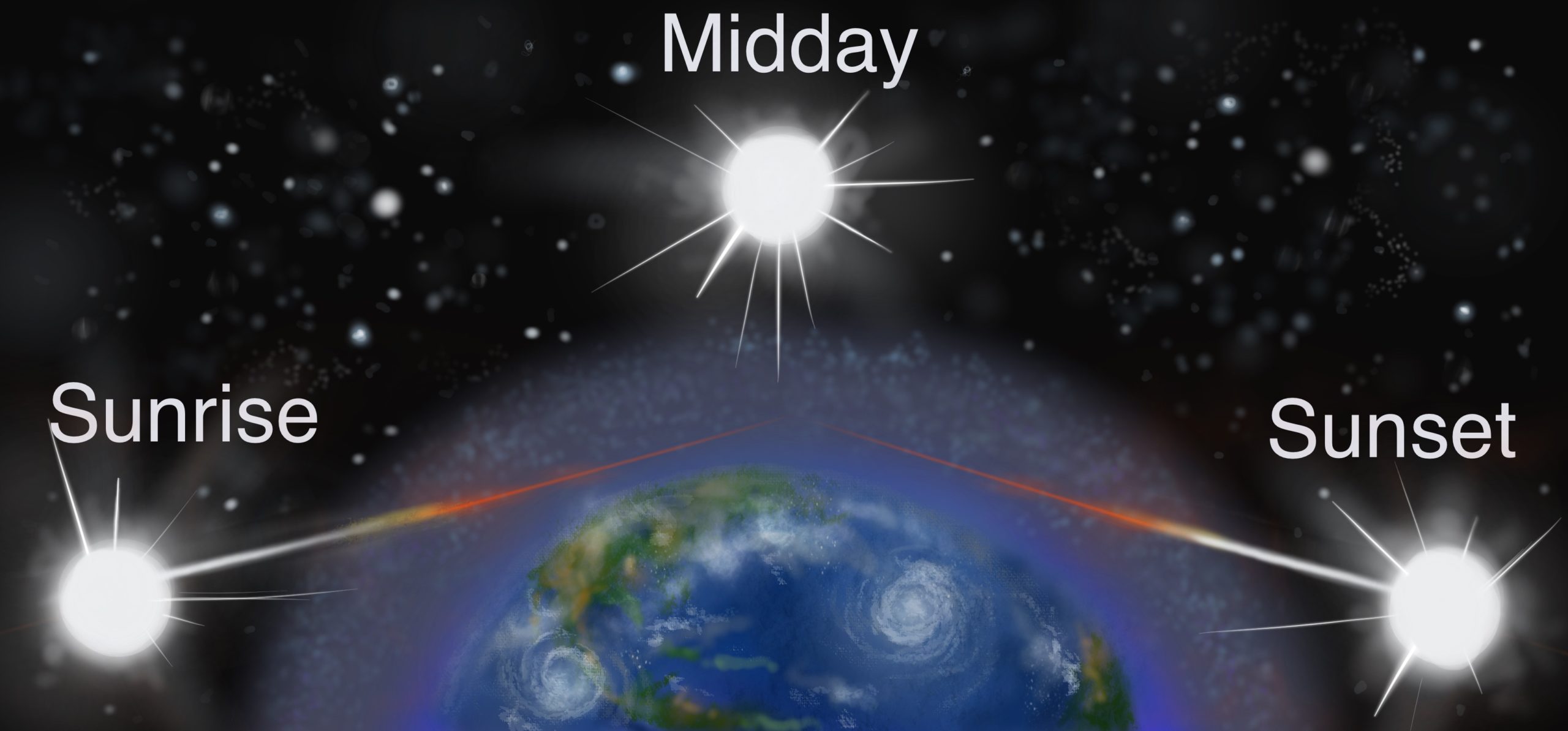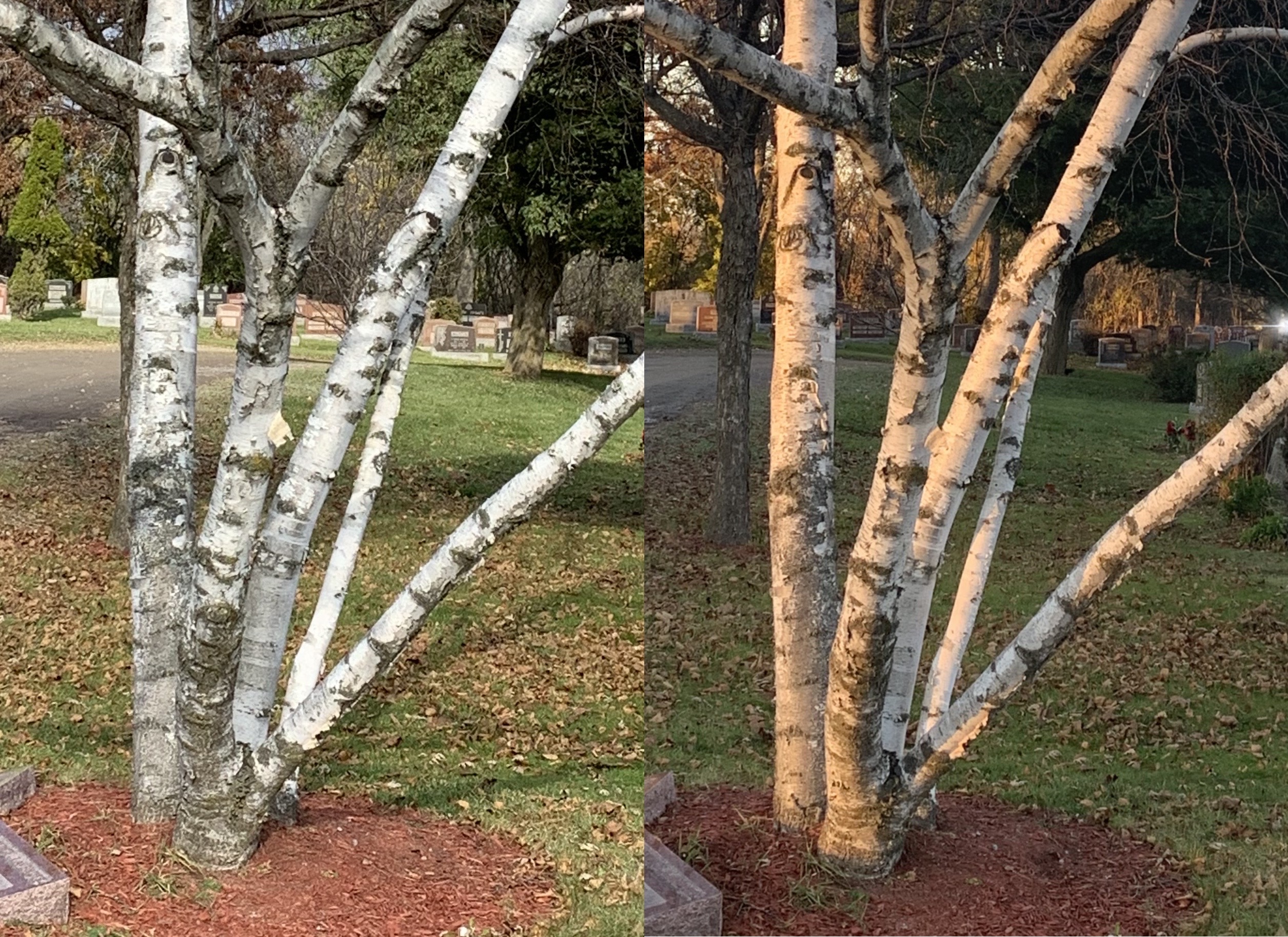Understanding how to paint the light and the color white is a common conversation topic for plein air artists, and it’s one that came up during a special talk led by Brenda Hozjan at a recent Fall Color Week. (Fall Color Week is an annual retreat for plein air painters, hosted by Eric Rhoads in the Adirondacks, New York).
Because it was so fascinating, we asked Brenda to share her insights on understanding the color white and applying it to your landscape paintings in this special Plein Air Today guest blog post. Enjoy! ~Cherie Dawn Haas
Reading White: When Science and Art Intersect
by Brenda Hozjan
When you close your eyes and picture the end of the day, intuitively you visualize everything with a red cast. Being able to see this and/or being conscious of why this occurs, will help you to paint this phenomenon more realistically. To understand how light inherits the color that it does, the easiest place to start is where the light itself starts: the sun.
Even though our sun is called a “yellow dwarf,” the light that it radiates is actually white with a slightly blue tinge. As sunlight passes through our atmosphere, the blue light portion of the white light is scattered and absorbed by the atmosphere, resulting in the familiar blue sky, while the red light portion remains relatively unaffected, resulting in the sun appearing a yellow/red color.
At midday when the sun is overhead, the sun’s light passes through the least amount of atmosphere and consequently, the light shining on objects is closest to its true color (white). This is not the entire story; the blue light is scattered by the atmosphere in all directions, so in addition to the white light there is a faint blue light that is also applied to everything. This results in the pale blue color of light that we see at midday.
Closer to sunset, because of its position, the sun’s light has to pass through more atmosphere than at midday. As a result, even more blue light is absorbed by the atmosphere and so the predominant light that shines on objects is more red. The same is true for sunrise since sunrise and sunset are mirror images of one another. The closer to sunset/sunrise, the redder the light appears, starting at pale blue/white at midday, moving to yellow, then to orange, and finally to red at both ends of the day (see Figure 1).

How White is White?
Being able to see the phenomenon is one step towards being able to paint it. So how do you read the color of the light if your eyes are not yet trained to see it? Black objects are black because they absorb all light/color. Inversely, white objects are white because they reflect back all light/color. This means that white objects function as a litmus test since they tell you exactly what color light is being applied to them. If a white object appears orange/red, it is because orange/red light is being applied to it. This is illustrated below with birch trees (see Figure 2). On the left is midday, where we see that the tree is white, with a hint of blue. On the right, the tree has an orange/red hue from the sunset light being applied to it.

Using white objects as visual cues is a helpful way to identify the predominant color of the light. If birch trees aren’t native to your region, you can look at some of mother nature’s other telltale swatches (i.e. clouds, snow, swans, daisies); even a piece of paper or a canvas will do. You can then apply this knowledge to understand how the local color of the objects is affected by the light. For instance, at the end of the day, compared to their midday appearance, white objects become redder, green objects become darker, and red objects stay the same but appear to be more vibrant because everything else is relatively darker (see Figure 3).

When plein air painting, look for objects that you know intellectually to be white since they will reveal the color of the light. After a while, you will train your eyes and will no longer need these visual cues. With practice, you will internalize this physical understanding and be able to use it to determine the correct color of light for the time of day that you are painting. This will help you to paint more internally consistent and convincing landscapes.
About the Artist
Brenda Hozjan currently lives with her family in Kingston, Ontario where she has her studio. She began her training in fine art at a young age and continues her studies more intensively with many internationally acclaimed artists.
Her work is influenced by historical styles which she uses as a foundation to create her own unique style of painting in acrylics. She appreciates the desire to accurately depict light, evident in the work of the impressionist painters, and is combining that with the attention to detail found in the work of the realist painters. While she enjoys painting different genres, she is currently focused on bringing birds and their individual personalities to life on canvas.
Brenda enjoys everything about the process of painting: studying techniques and styles, designing, and teaching (both locally and internationally). She is enjoying her artistic journey and hopes that is evident in the work she creates.




Fantastic writing from Brenda Hozjan. Nice job my friend, Brenda. You’ve given all of us something to look forward to while out and about and watching the glow of the sun and how it changes as the day goes onward. Light and shadows are so much fun during those times you describe. Looking out across a wheat field at dusk is an amazing sight to behold. Thanks again and keep painting to you, Brenda….. up north from Kansas, U.S.A. I’m so glad I got to meet you, Christine and Diane at Paint Adirondacks, 2019. <3
Brenda Hozjan, Nice job my friend. You’ve given all of us something to look forward to while out and about and watching the glow of the sun and how it changes as the day goes onward. I particularly like the pink on the white trees discussion and example. Looking out across a wheat field at dusk is an amazing sight to behold, especially here in the Midwest. Thanks again and keep painting Brenda. Warm wishes to you and yours up north from down here in Kansas, U.S.A. ;o) ShirleyA